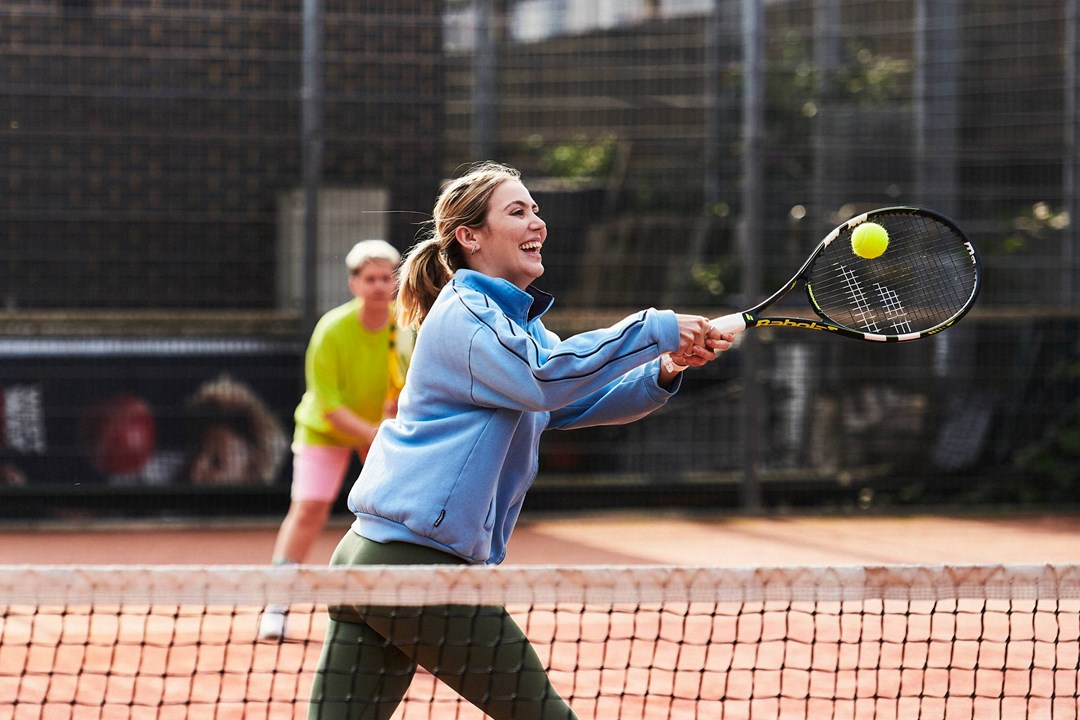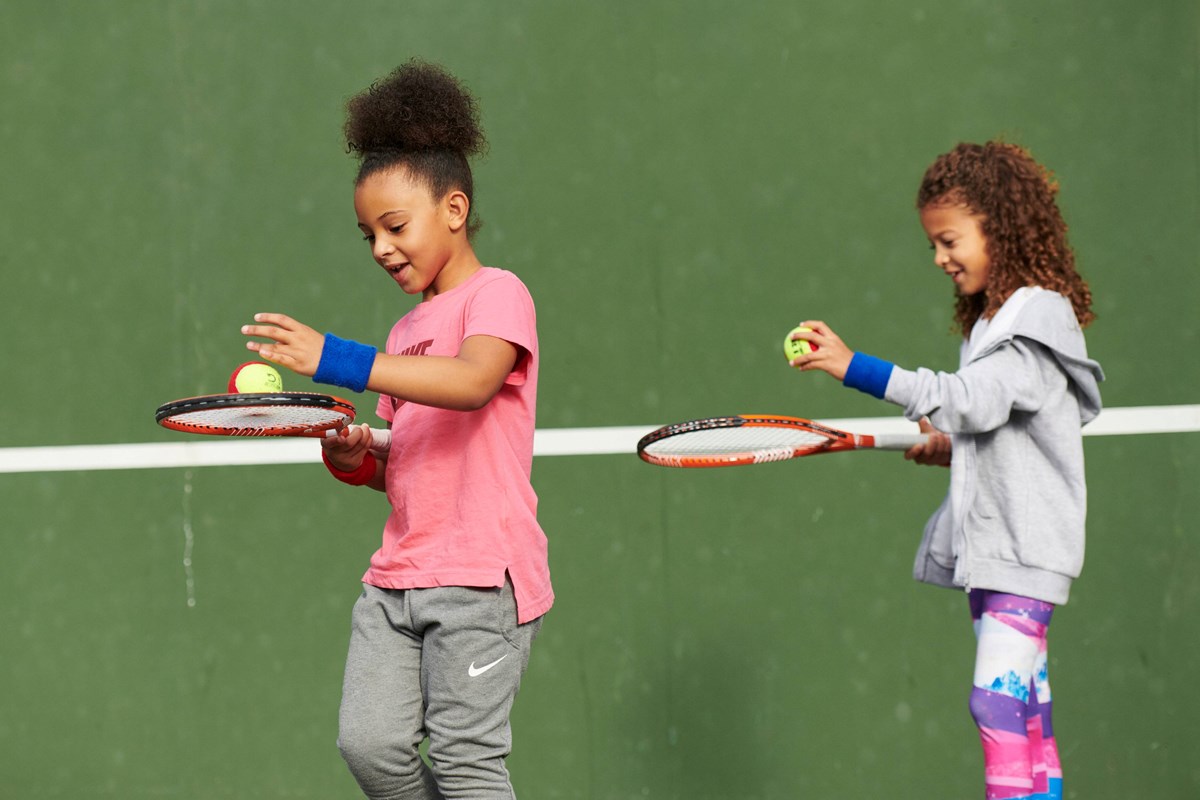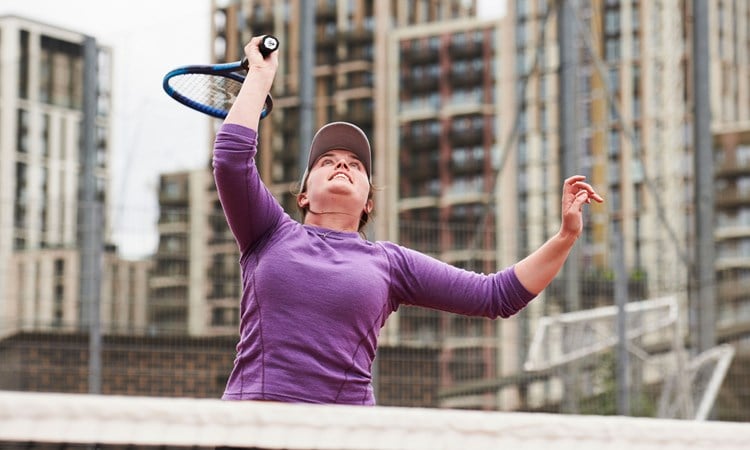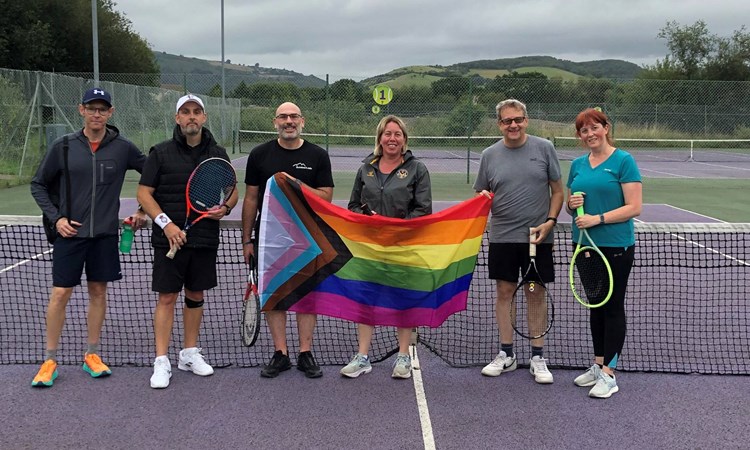
More women and girls playing tennis than ever – but gender equity in participation still a way off
• 4 MINUTE READ
Nearly two years on from the launch of the LTA She Rallies ambition and at a time of ever advancing developments in the women’s sport world – we take a deeper look at the status of tennis participation among women and girls in Britain, the positive trends, the ongoing challenges, and what we're is doing to address them.
In many ways tennis has been well ahead of the times when it comes to the visibility of women in the game, the professional and commercial opportunities for women within the sport, and in recreational participation. With equal prize money at the Grand Slams and female tennis players frequently dominating the world’s highest paid athletes lists, some may have been led to the assumption that tennis had achieved gender equality.
In June 2022, we launched our She Rallies ambition to ensure that we were challenging ourselves to look deeper into the sport and highlighting the areas where there is still a lot of progress to be made. We are taking the steps to thoroughly understand the issues and making the necessary interventions to address them, with our work is focused on three key areas – participation, workforce and visibility.
Read more about our She Rallies ambition
More women than ever playing tennis
Tennis participation in Britain is in good health, reaching new highs among both adults and children in 2023. A record 5.6 million adults were reported to have played tennis in 2023, 42% of which were female, which is more women than we’ve ever recorded playing tennis in a year.
Similar positive trends were recorded amongst the 4-15 age group, with girls representing 49% of the 3.6 million children picking up a racket in 2023. Key to this success has been the LTA Youth Schools programme which has an equal split of boys and girls taking part in tennis in schools and is continuing to train more and more teachers to deliver tennis nationwide.
Acknowledging that there is still work to be done to increase the number of women playing tennis annually, the key challenges are improving the gender split of people playing tennis more frequently and in competition.
Understanding the playing habits of women allows us to make targeted interventions that we believe will have the most positive impact on raising the number of women and girls picking up a racket and encouraging more frequent play.
Girls represent 49% of the 3.6 million children picking up a racket in 2023.
Challenges
Frequency of play and competition
Across all age groups, from children to adults, there is more of a skew to males as the frequency of play increases. Boys are more likely to play outside of school, on a more regular basis and more likely to take part in competitions than girls. At the adult level, women account for 42% of annual players, but only 30% of those are playing tennis on a weekly basis.
Our insight tells us that barriers to women’s participation in tennis include not having anyone to play with or anywhere to play, alongside health, injury and fitness issues and thinking they won’t be good at it. There is more of a tendency among women to be self-deprecating and less positive about their own tennis-playing ability than men, meaning it is important to make tennis more appealing to women through an offering of different formats and social led sessions rather than a sole focus on competition.
We have developed a number of different products and programmes rolled out across venues nationwide that provide different options including Tennis Xpress, our adult beginners programme, Cardio Tennis, a more fitness focused session, and Walking Tennis for those with fitness, injury or health concerns.
Crucially, we are also investing in facilities which we know are popular venues for women to play – most notably through the Park Tennis Project, a £30 million investment by the UK Government and LTA Tennis Foundation, which has already seen nearly 1,800 public courts refurbished and counting.

Our aim is to substantially increase annual participation in parks by over 500,000, and through a programme of free, social sessions at weekends, address a number of the barriers that prevent women in particular from playing more regularly. A key priority for the year ahead will also be engaging tennis venues to have greater awareness of many of these areas and encourage all to think and act more inclusively.
We are also taking a strategic approach to our competition structure that will encourage more casual players to consider playing competitive matches. Key to this will be striving to ensure all competition environments are welcoming and enjoyable for women and girls with a focus on more team competition opportunities at all levels of the structure as this is where we see higher female participation.
Retaining girls through teenage years
The participation trends laid out in this article show that the gender equality we’re seeing in tennis participation in earlier years are not translating to adult participation.
Tennis is not alone in seeing a lapse in teenage girls and we have therefore been working with leading organisation Women in Sport to better understand the complex societal and physical environments girls are living in and how that influences their attitudes to sport and physical activity.
2023 saw the launch of the Prime Video LTA Youth Girls programme, which has trained 500 coaches to understand the social and environmental pressures on girls both outside and inside sport.
One element that is key is ensuring that the experience of girls in their younger years is as positive and engaging as possible. Women in Sport research shows that gender stereotypes assigned to girls at an early age will have a lasting impact on girls. These stereotypes often don’t align with being ‘sporty’ and therefore once a girl does not identify as ‘sporty’ she is very likely to stop taking part once it is no longer compulsory to do sport in secondary schools.
Through LTA Youth Schools, delivered in both primary and secondary schools, we are striving to give children a quality, positive, fun and engaging experience of tennis and build strong foundations of confidence and enjoyment in sport. Additionally, the LTA Youth programme helps facilitate links with local community clubs so girls who have a positive experience know where they can play outside of PE and school sport.
2023 also saw the launch of an innovative new programme Prime Video LTA Youth Girls, which has trained 500 coaches to understand the social and environmental pressures on girls both outside and inside sport and how that may impact their coaching, how to design drills and activities that meet the psychological needs of girls and in how to deliver a tailored, gradual format to introduce girls to competition.
Learn more about Prime Video LTA Youth Girls
In the first year of the programme, 90% of coaches that responded to evaluation said they felt that running girl-only group sessions were improving the confidence, sense of belonging and developing friendships among the girls and that they were more likely to continue with coaching when compared with a mixed group.
Tennis has a long and rich history of leading on gender equality, we are committed to tackling the barriers that continue to prevent true gender equity on the court.
Throughout March, we will be looking more at ongoing work focused on addressing the challenges women face off the court.





